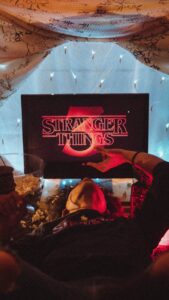1,000 cranes; luck and hope for Japan one paper fold at a time
The idea to sell the paper cranes on campus was by Meagan Roach. Her dorm mate, Ayuko, is from Japan, so she felt the effects of the earthquake a bit more. Although Ayuko’s family is safe, Roach wanted to do something to help. She has held a long love for Japan and is planning to eventually study abroad there after transferring to Utah State University-Eastern.
This archived article was written by: Valeria Moncada
The idea to sell the paper cranes on campus was by Meagan Roach. Her dorm mate, Ayuko, is from Japan, so she felt the effects of the earthquake a bit more. Although Ayuko’s family is safe, Roach wanted to do something to help. She has held a long love for Japan and is planning to eventually study abroad there after transferring to Utah State University-Eastern.
The idea for the 1,000 paper cranes came from a traditional story in Japan and America. A girl named Sadakko was near the Hiroshima Bombings, and developed Leukemia. While she was in the hospital receiving treatment, she was told that if she folded 1,000 paper cranes, she would have any wish she wanted granted. Originally the crane was a symbol of luck, so folding 1,000 accumulated enough to change the course of fate and destiny.
She set out folding paper cranes and while she was in the hospital she made a friend, unfortunately she became to weak to make it to 1,000 and passed at 644. Before she died, she changed her mind that instead of her own life, it would be her newfound friends life. Her friend and family finished the cranes, and Sadakko has become a national icon in Japan. The Hiroshima Peace Monument has a statue of Sadakko holding a paper crane, and to this day people leave paper cranes at the monument. Whenever there is a tragic event, it is tradition to fold 1,000 cranes after Sadakko.
“We fold these cranes to reach the wish of support for Japan. They are an international friend of the United States, and if something similar happened to the U.S, we know that they would do the same,” said Roach.
The popular saying in Japan at the moment is “Ganbarre Nippon” which translates to “Hang in there, Japan, do not give up” – keep moving forward. That is USU-Eastern message of support as well. “$1,000 might not be much, but the idea was to stop wishing for something and to make it happen instead,” Roach said.
Students have been very supportive in buying the paper cranes. There are many students who don’t have the money, but have come in to help fold cranes. There has been a tremendous amount of support and help from students on campus. GSA is close to 400 paper cranes being sold, and 800 being folded. Many teachers have been supportive as well and have offered extra credit to those who participate in the fund raiser, either by folding cranes or buying them.
The SUN Center started selling the paper cranes at the end of March and they will be selling them through May, after finals at USU Eastern. Afterward, the paper cranes are going to be taken to Carbon High School and, with the help of their GSA, continue selling them.
At this time, the paper cranes can be purchased in the SUN center during regular office hours. If people are interested in folding them the SUN center or GSA meetings are the places to go. The GSA meetings are held every Wednesday at 8 p.m. in the upstairs Burtenshaw lounge. People who volunteer to help fold cranes can also earn service-learning credit hours for folding cranes.
The entire GSA has done a tremendous amount of service work to make this project run smoothly, one meeting in particular dedicated 6 hours to folding cranes. Jennifer Trushka, GSA supervisor, has also given the students an enormous amount of support and guidance, even going so far as to participate in the booth hours.
The Sun Center has also been a huge help as they have helped GSA set up headquarters to purchase the cranes, as well as the advice that has been given from years of doing service and fund- raiser projects.
Alex Herzog and Greg Benson have been awesome in working with the GSA in trying to find a place to put the monument and helping with the paperwork involved. There have been many students that have just wanted to get involved with the project, either by publicizing it, or helping to hold the booths during events.
Eastern Utah’s goal is to raise $1,000 in the spirit of the tradition. GSA was originally going to donate to the American Red Cross, but discovered, there is not much control over where the donation money goes, and how much of it directly goes to Japan.
GSA is now looking at Doctors Without Borders because it is a group that is both LGBT friendly, and also a group where more of the relief funds go directly to Japan, in the spirit of Sadakko and the 1,000 cranes. GSA wanted to build and leave something for the students to look at in the student center.
So with that in mind, when someone buys a paper crane, they can write any message of support on the wings. We are planning to build a memorial with the cranes to leave behind as a gift to the school from the GSA that will ultimately show future students what USU Eastern students are capable of while encouraging to get involved in the world around them and make a difference. “Also it is going to be fun to try to find your paper crane out of the other thousand,” said Roach.




